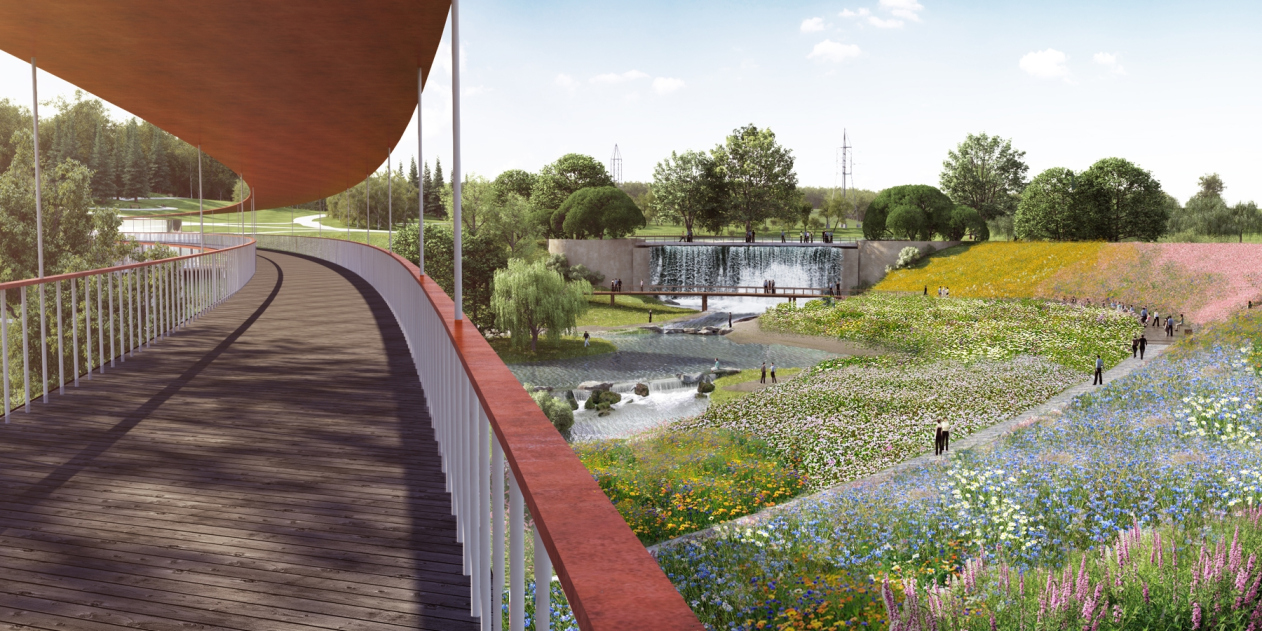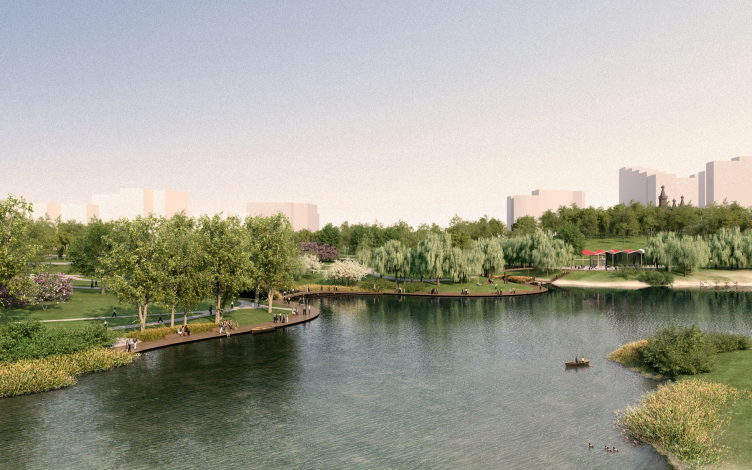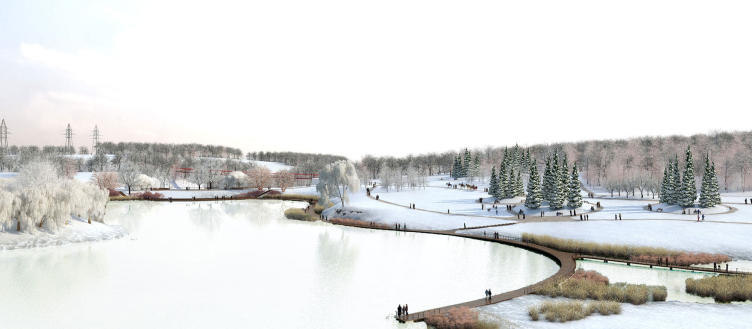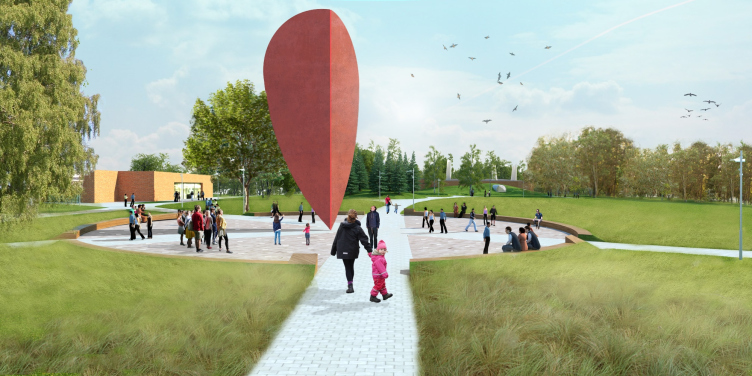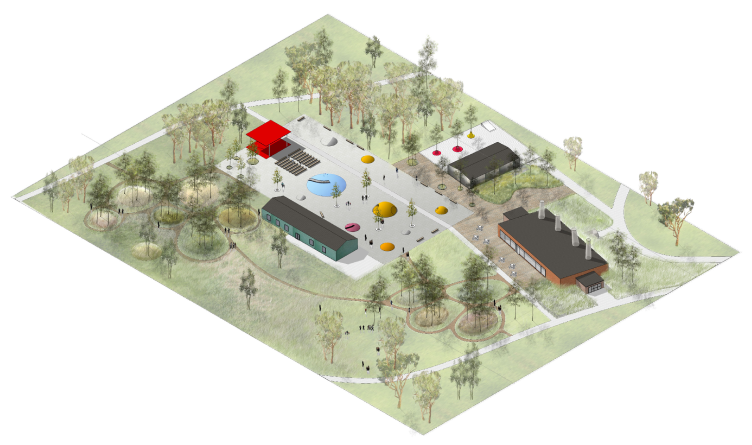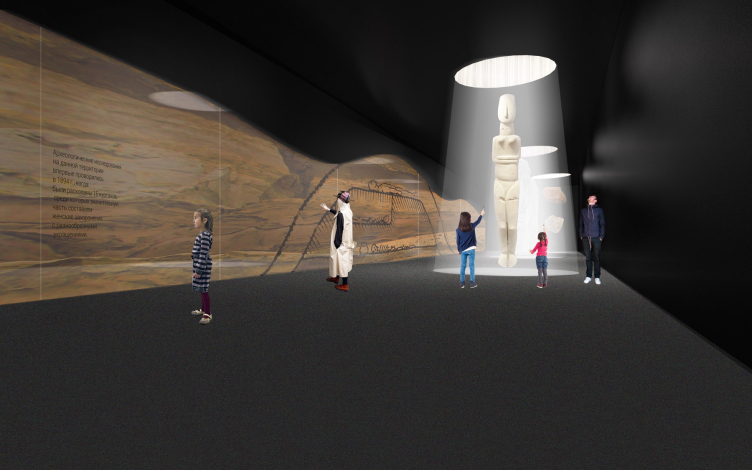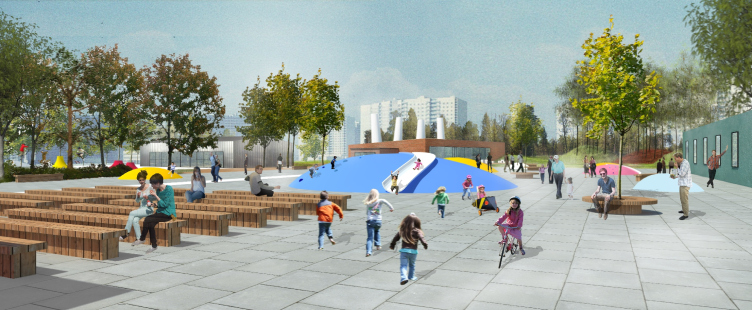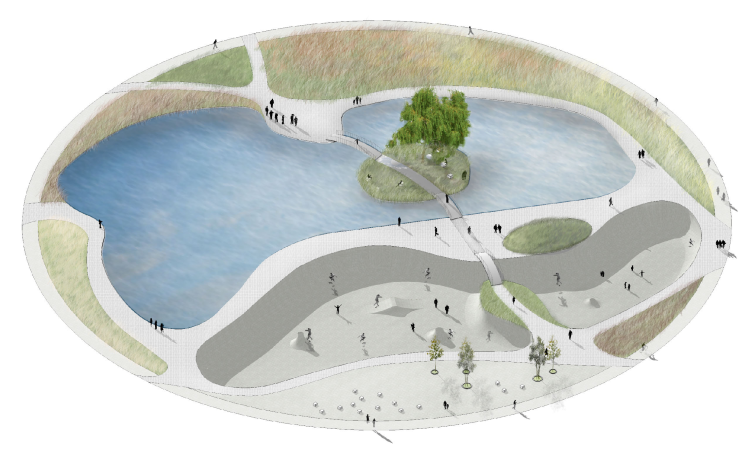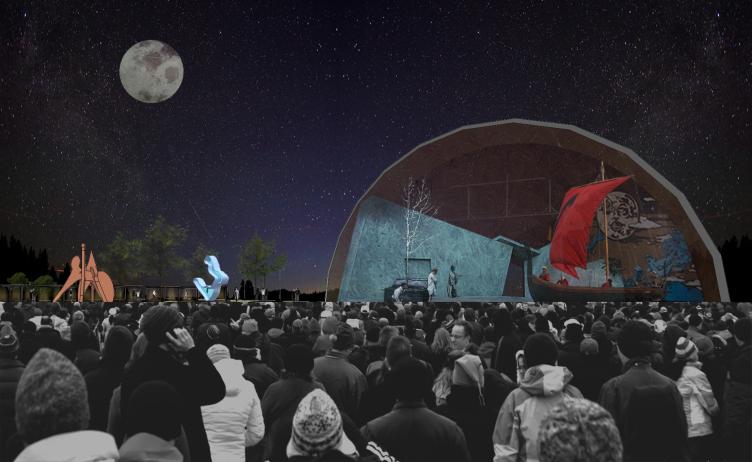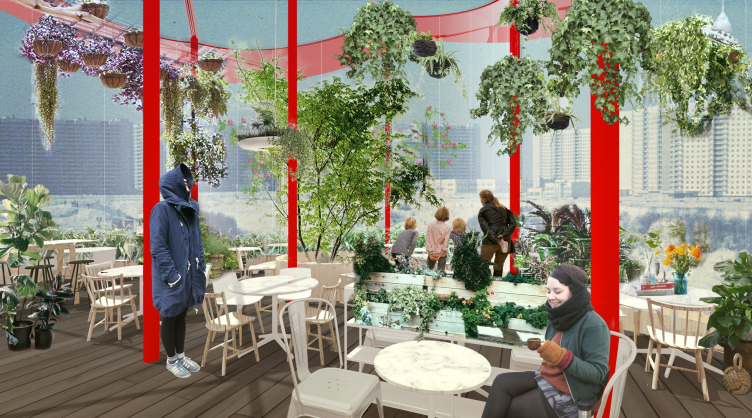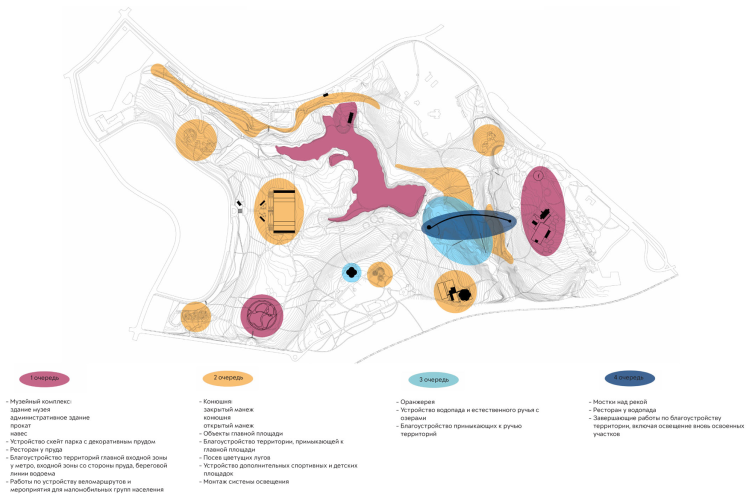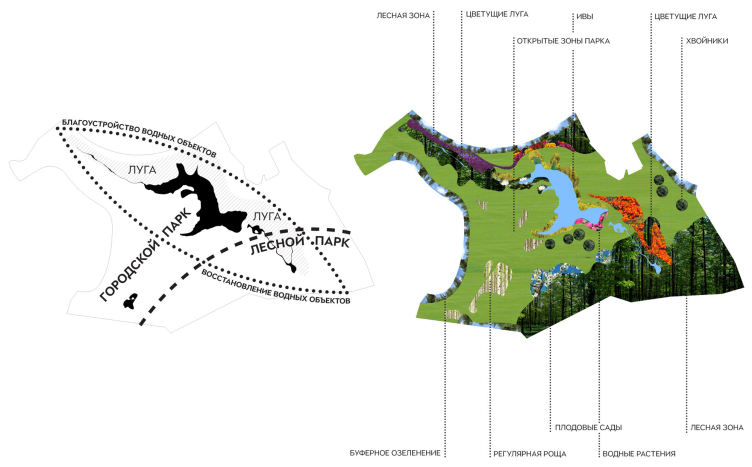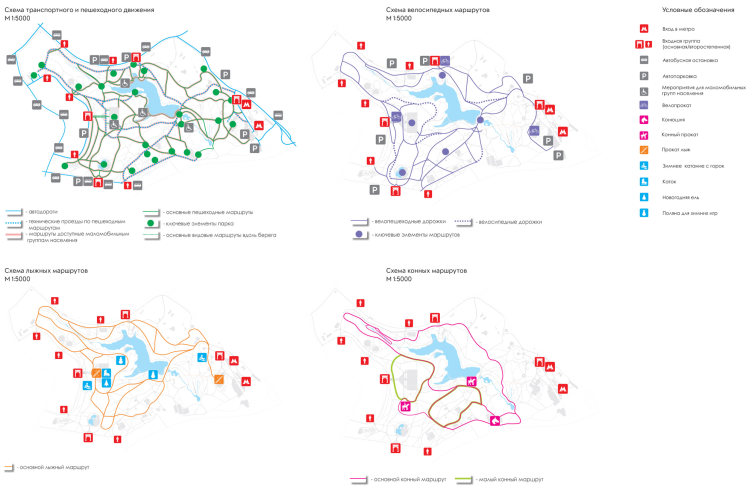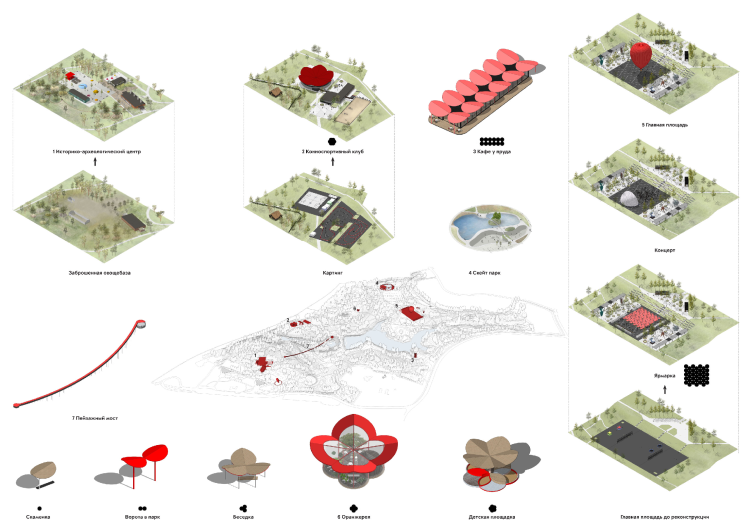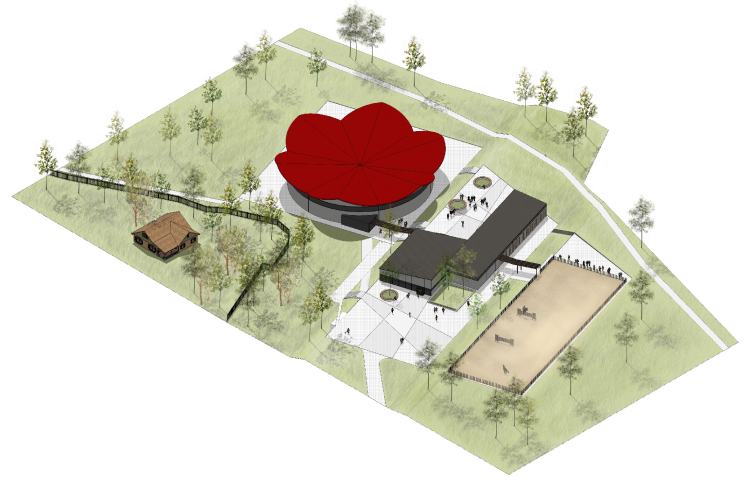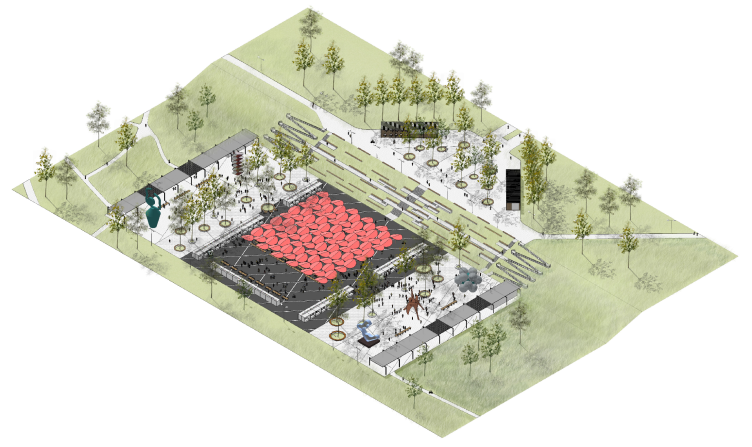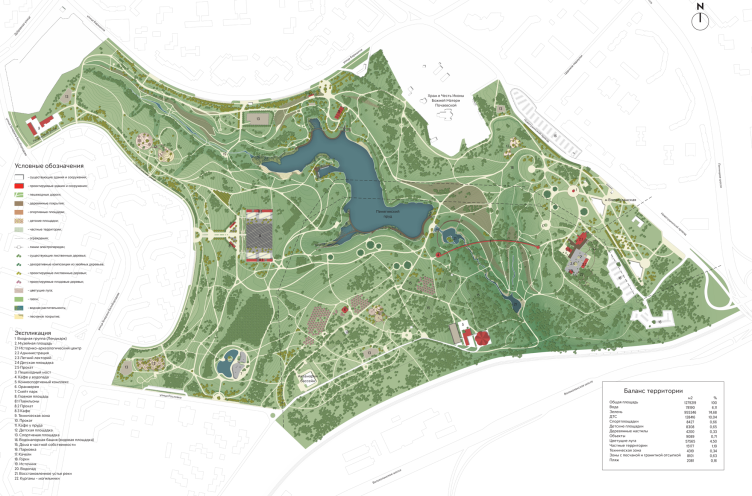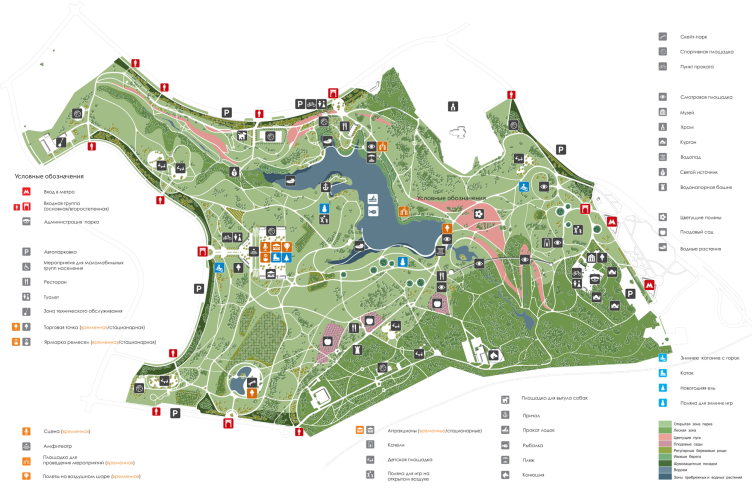As we already reported, December 19, the consortium ARTEZA was announced as the winner of the contest for the development of the project of "Mitino" park. The project was developed by the studio of landscape design ARTEZA and the architectural bureau FORM with the support of the consulting company Russian Research Group and the company "I-Pro". The contest started on the 27th of August, 23 consortiums participated in it, 10 of which made the finals.
This park, one of a kind in the comparatively new "beyond-the-ring-road" neighborhood, owes its appearance to archaeologists: back in the 90's, when this territory started to get overbuilt with multi-apartment houses, burial mounds of XI–XIII centuries were discovered here. 126 hectares - about 10% of the overall area of this district - got the status of the cultural and historical monument; the first landscape park was created here in 2003 upon the plan of "Mosproject-3". The park has the Baryshikha River flowing through it which forms two ponds, the Maly (Minor) and the Bolshoi (Major) Penyaginsky - the latter occupies almost six hectares, is located almost exactly in the middle, and has an intricate contour. The contestants' task was to develop a comprehensive concept: from the architectural and landscape proposals to the recreational program and the economic calculations.
Overview. Concept of the landscape development of "Mitino" Park. Landscape design studio Arteza © Arteza
Overview. Concept of the landscape development of "Mitino" Park. Landscape design studio Arteza © Arteza
The winning concept has a name of "Krasny Park" ("Red Park"). "In the old Russian, "Krasny" ("red") meant "krasivy" (beautiful) - the authors explain - But we also proposed a symbol of the park upon which its whole identity can be based: a red leaf. A simple autumn leaf, not even much to come up with, we found it in a park! Besides, this simple and harmonious form refers us to the oak leaf that's there on the logo of Mitino".
Entrance group. Concept of the landscape development of "Mitino" Park. Landscape design studio Arteza © Arteza
In the version proposed by the authors, the oak leaf sports a really simple shape; it is "generalized-oval", and, of course, red or, as an option, showing a red outline. The architects use it as a module for most of the lightweight structures of the park: the leaf can be easily folded along its axis and it sometimes looks like a drop of water and sometimes - like a petal. It makes great awnings of various kinds - small ones above the children's sandpits, large sophisticated ones above the fairground, and intricate ones for the exquisite roof with long and slightly upturned marquees - executed, for example, in the shape of beautiful petals over a "greenhouse" cafe, or, of a larger size, above the horse stalls.
Form-making of the objects. Concept of the landscape development of "Mitino" Park. Landscape design studio Arteza © Arteza
Cafe next to the creek. Concept of the landscape development of "Mitino" Park. Landscape design studio Arteza © Arteza
Fairground. Concept of the landscape development of "Mitino" Park. Landscape design studio Arteza © Arteza
Greenhouse Cafe. Concept of the landscape development of "Mitino" Park. Landscape design studio Arteza © Arteza
The authors - and this became one of the main reasons for their victory in this contest - paid a lot of attention to uncovering the value of the archeological legacy, the burial mounds, because of which, in fact, the park appeared. Not far away from the Volokolamsksya metro station and the parking lot, the architects proposed to make a history-and-archaeology center, housing it in the restored buildings of the now-neglected vegetable warehouse: the museum, in particular, will be housed in the relatively intact red-brick hangar. Using the existing terrain profile - the "bulge" of the soil that approaches the building from the direction of the metro station, the authors saw in it a semblance of a burial mount, and actually cut the hill with an entrance corridor - the visitors will get inside the museum, literally passing through the sliced layers of soil, as if through a real mound. The dim expo space will be backlit by elongated lamps placed at various angles and reminding of trees growing upon mounds - the whole museum starts looking like some kind of an archaeological object, its space and volume being meant not only for demonstrating the valuable excavations but also for creating the appropriate mysterious atmosphere.
History and archaeology center. Concept of the landscape development of "Mitino" Park. Landscape design studio Arteza © Arteza
The interior of the museum. Concept of the landscape development of "Mitino" Park. Landscape design studio Arteza © Arteza
Museum square. Concept of the landscape development of "Mitino" Park. Landscape design studio Arteza © Arteza
Behind the building, there will be a museum square surrounded by the building of the park administration, a summer lecture-hall, and a light pavilion. In the center of the square, there will be a few little mounds for the children to play upon. From the square, the loops of the trails start winding between the mounds; the guided-tour routes will be organized here.
From one of the trails of the museum part, starts the long arc of the roofed pedestrian bridge hanging high up in the air - "it touches the top notches of the terrain" - above the Baryshikha River. This bridge not only connects the eastern museum part of the park with the park's center and the creek, not only helps the physically challenged people with an easier access to the park, but will also commands fine views of the waterfall and of the meadows in bloom - Arteza proposed to create in the park a whole system of meadows, many of which will be grouped around the two sides of the bridge.
View from the bridge. Concept of the landscape development of "Mitino" Park. Landscape design studio Arteza © Arteza
In the southern part of the park, what now is a go-carting zone only active in summer turns into an all-season equestrian center.
Closer to the Roslovka Street, around a small pond that is now not even filled with water, a skate park is formed. The asphalt-covered rectangular square in the western part of the park will be turned into a multifunctional venue dissected into the central zone for the mass events, concerts and fairs, and the less busy side zones under the awnings. The existing terrain drop is used for the creation of an amphitheater. The north bank of the creek gets a restaurant.
Skate park. Concept of the landscape development of "Mitino" Park. Landscape design studio Arteza © Arteza
Main square. Concept of the landscape development of "Mitino" Park. Landscape design studio Arteza © Arteza
Greenhouse cafe. Concept of the landscape development of "Mitino" Park. Landscape design studio Arteza © Arteza
The authors divided the implementation of their project into four stages: the first one will include the museum center, the skate park, the restaurant, and the landscaping of the creek banks, then - the square, the equestrian park, and the meadows. A later stage will include the more expensive arrangements like landscaping the banks of the creek and the construction of the greenhouse. The "final stroke" will be the pedestrian bridge.
Implementation stages. Concept of the landscape development of "Mitino" Park. Landscape design studio Arteza © Arteza
Typology of landscaping the park territory. Concept of the landscape development of "Mitino" Park. Landscape design studio Arteza © Arteza
Traffic layouts. Concept of the landscape development of "Mitino" Park. Landscape design studio Arteza © Arteza
Location map of the key objects of the park. Concept of the landscape development of "Mitino" Park. Landscape design studio Arteza © Arteza
Horse stalls. Concept of the landscape development of "Mitino" Park. Landscape design studio Arteza © Arteza
Main square. Concept of the landscape development of "Mitino" Park. Landscape design studio Arteza © Arteza
Main square. Concept of the landscape development of "Mitino" Park. Landscape design studio Arteza © Arteza
Main square. Concept of the landscape development of "Mitino" Park. Landscape design studio Arteza © Arteza
Master plan. Concept of the landscape development of "Mitino" Park. Landscape design studio Arteza © Arteza
Architectural and planning organization of the territory. Concept of the landscape development of "Mitino" Park. Landscape design studio Arteza © Arteza
